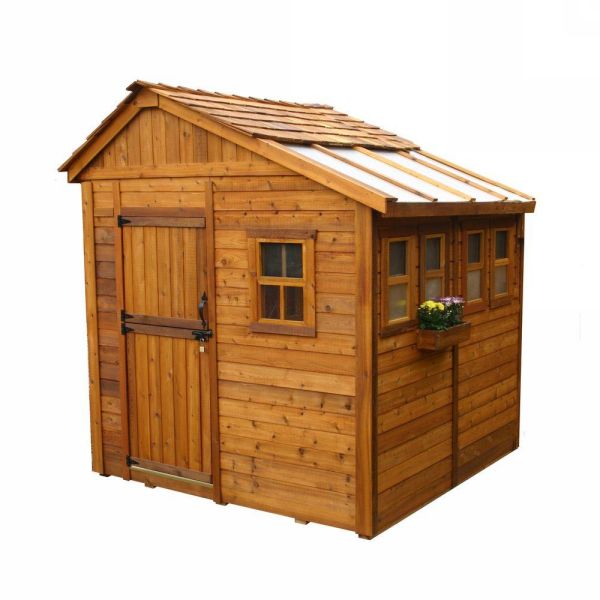Workshop Outbuilding Building Schematics 4x20 : DIY Storage Shed Projects
Avoid last-minute shopping trips for how to frame a wall by having all your materials ready ahead of time. This ensures it doesn't shift while you pour in concrete. The metric sizes are not an exact match to equivalent imperial sizes. This flooring will have a roof over it and walls on all four sides so water drainage is not an issue. Make sure the corners of frame are square before laying the flooring. Alternatively, you can insert bent anchor bolts instead of post bases. Install only outer posts closest to outbuilding for now. If you need extra storage space, but you don't have a large backyard, you could still make a proper shed that fits your needs.
If there are any dimensions over 8', and using 2x6 joists, a third set of holes must be dug. This made cutting all my 2x4s a (redirected here) lot quicker, but you could also chop them using a circular saw. The first step is to calculate the amount of materials you need, this is not too complicated if you substitute your numbers in for mine. You may freely link to this site, and use it for non-commercial use subject to our terms of use. To finish squaring the base simply measure distance from each set of diagonal corners, once they are same it is square and it is time to add the floor.
For this, you take the same 2-by-4 material used in the house framing, segment two pieces to fit in between two vertical studs, and then nail or screw them into place to form a quick little box that is dry-walled in later. The desired slope is rise over the run, multiply the run in feet by desired run, and you have the total rise in inches. Talk to your gravel supplier for an estimate on crushed limestone you'll need. Some things needed to be special ordered ahead of time but not too early so that a smooth project would proceed on schedule.
Our 12' wide cottages all have a standard pattern which is shown in diagram below. The bar door attaches to inside of outbuilding with hinges and swings up to open. Nail or screw timber to rafters starting at eaves and working up. You'll need to craft the spans between piers along 10 ft. length shorter than 4 feet to ensure you assemble enough piers. For extra strength, use screws to attach the frame. In addition, under roof storage space is really handy, if you want to keep your small tools or paint cans in order. Typically you'll use 16-penny nails for nailing studs together and 8-penny nails for securing sheeting.
And to construct it simpler, we've divided up process into 11 easy questions that need answering. They are a good way to secure a temporary or permanent shed to a foundation. At this point you should think about anchoring your floor frame. Except for pieces along the outside edges, this lumber was recycled. Adjust the fit as needed and use the pattern to mark remaining long rafters. Adjust the size of the sheets at right dimensions and attach them to the walls frame, making sure the edges are flush and there are no gaps between the components. Verify line is level with the bubble level.
This will be my first big project like this. And the rafters must have a secure connection to hips. Nail 1 x 6 tongue-and-groove cedar siding in place. Create a new jig for this frame. Cut the cedar lattice panels to fit between 4x4s and secure them with 1x2s nailed on each side. It took a long time, and it was noisy, grueling labor. Nearly every home, regardless of its size, has a shortage of accessible storage space. Stand a stepladder next to a post at one corner. Reposition the catwalk, as necessary, and mark the side of a rafter at 64 inches above the joist that's below that rafter.
